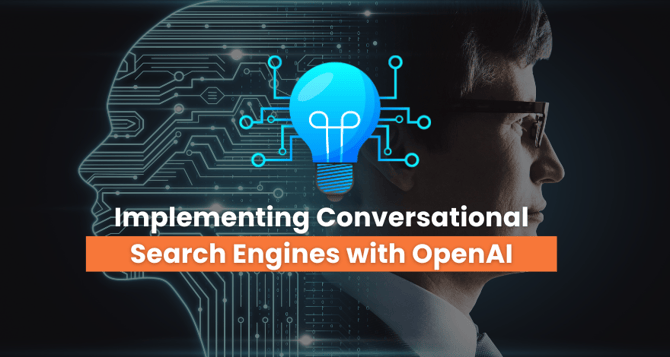Implementing Conversational Search Engines with OpenAI
Implement conversational search engines with OpenAI to transform information retrieval. Elevate user engagement through intelligent language processing, creating a seamless and personalized search experience that adapts to individual preferences and needs. Harness the future of search technology with our innovative solutions.

Conversational search engines are revolutionizing the way we interact with information and technology. Powered by OpenAI's language models, these engines allow users to search for information through natural language conversations. In this article, we will explore how to implement conversational search engines with OpenAI's GPT-3, focusing on examples and detailed insights.
Understanding Conversational Search Engines
Traditional search engines require users to input keywords or phrases to retrieve relevant information. Conversational search engines, on the other hand, enable users to ask questions and have a conversation with the system. OpenAI's GPT-3 is at the forefront of this technology, allowing developers to create search engines that understand context and intent.
Key Components of Conversational Search Engines
1. User Interface:
Conversational search engines typically feature a chat-like interface where users can enter queries in plain language. The user interface is a critical component, as it sets the stage for a natural conversation.
2. Natural Language Understanding:
OpenAI's GPT-3 plays a crucial role in understanding user queries. It can comprehend the context of the conversation, making it possible to ask follow-up questions and clarify intent.
3. Information Retrieval:
To provide relevant search results, conversational search engines need access to a vast database or the internet. These engines should be capable of fetching, filtering, and presenting information in a conversational format.
Revolutionize Search with GPT-3 Conversational Engines
Let's dive into the practical steps for building conversational search engines using OpenAI's GPT-3.
Step 1: Set Up Your Development Environment
Before you begin, ensure you have OpenAI's API access and required development tools in place.
Step 2: Define the User Interface
Design the user interface for your conversational search engine. This could be a chat widget or a web application that accepts user queries.
Step 3: Implement Natural Language Understanding
Integrate OpenAI's GPT-3 into your application to process user queries. GPT-3 can provide suggestions for generating relevant responses to search queries.
Step 4: Information Retrieval
Implement a data retrieval mechanism. This can involve accessing web APIs, databases, or any other source of information. Ensure that you can extract data based on user requests.
Step 5: Response Generation
When GPT-3 provides suggestions for responses, use these to generate user-friendly and informative responses. The responses should mimic a conversation rather than a list of search results.
Examples of Conversational Search Engine Queries
1. General Knowledge Queries:
User: "Tell me about Albert Einstein's theory of relativity."
Engine: "Albert Einstein's theory of relativity includes both the special theory of relativity and the general theory of relativity..."
2. Product Search:
User: "Find me a laptop with at least 16GB RAM and a lightweight design."
Engine: "I recommend the MacBook Air with 16GB RAM. It's known for its lightweight design and powerful performance."
3. Local Business Information:
User: "What are some highly-rated Italian restaurants near me?"
Engine: "There are a few great Italian restaurants in your area. La Trattoria is known for its authentic Italian cuisine..."
4. Technical Assistance:
User: "How do I fix a leaking faucet in my kitchen?"
Engine: "To fix a leaking faucet, you can start by turning off the water supply to the faucet. Then, disassemble the faucet handle and replace the faulty washer."
Challenges and Considerations
1. Data Privacy:
Ensure that you respect user privacy and handle sensitive information securely.
2. Data Accuracy:
Verify the accuracy of information retrieved from external sources.
3. Ethical Use:
Use conversational search engines responsibly, and be cautious about spreading misinformation.
Conclusion
Conversational search engines powered by OpenAI's GPT-3 are transforming the way we search for information. These engines enable users to have natural language conversations with technology, making information retrieval more intuitive and user-friendly.
Let's Embark on a Journey to AI Excellence Together
Contact our team to explore tailored AI solutions that can boost your business growth.
By understanding the key components and following the implementation steps, developers can create conversational search engines that provide detailed and context-aware responses to user queries. As this technology continues to advance, the possibilities for conversational search engines are boundless, shaping the future of information access and interaction.


%201-1.webp)


.png?width=344&height=101&name=Mask%20group%20(5).png)
.png?width=800&height=200&name=Customized%20AI-Driven%20Solutions%20(1).png)
















